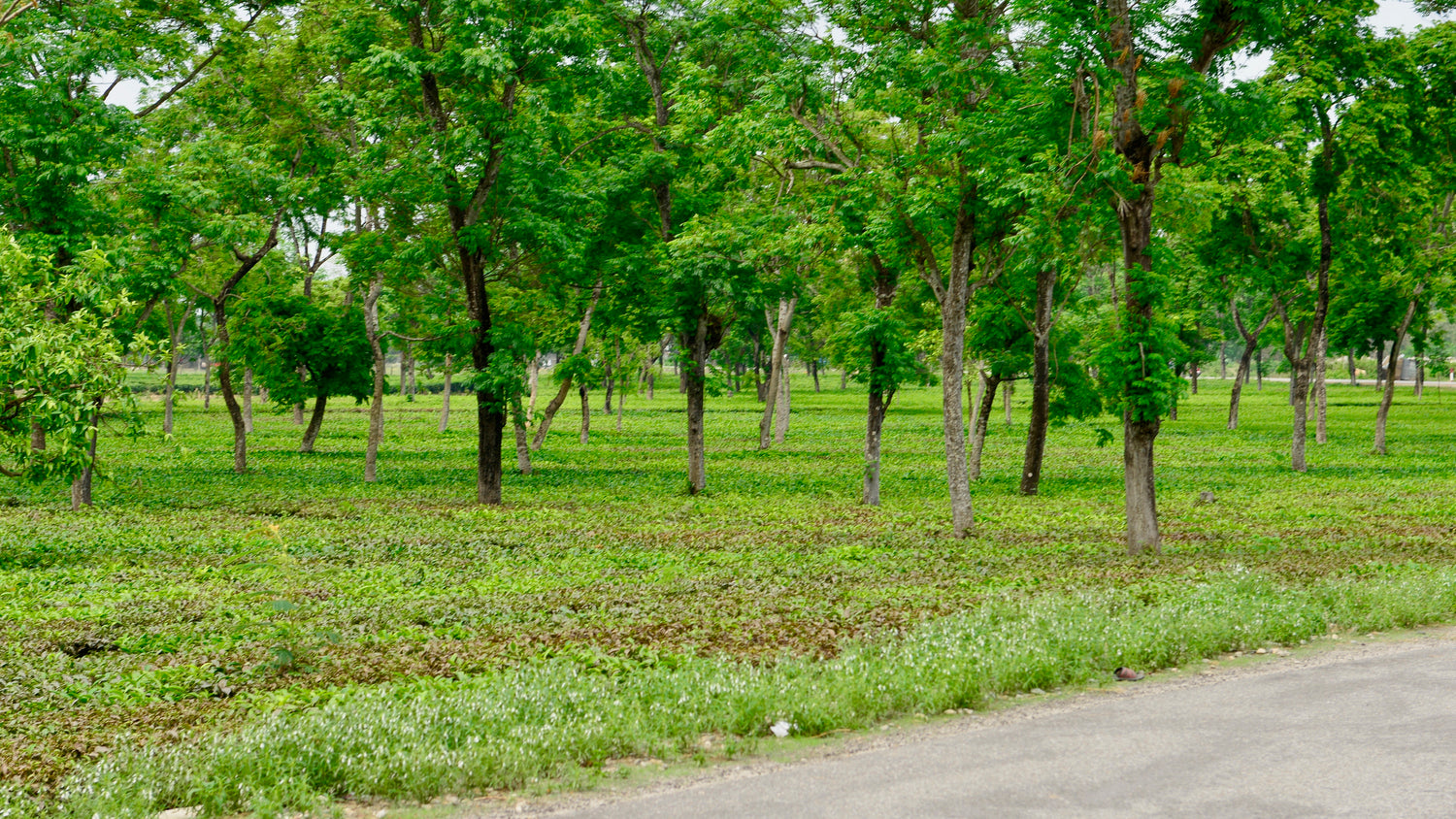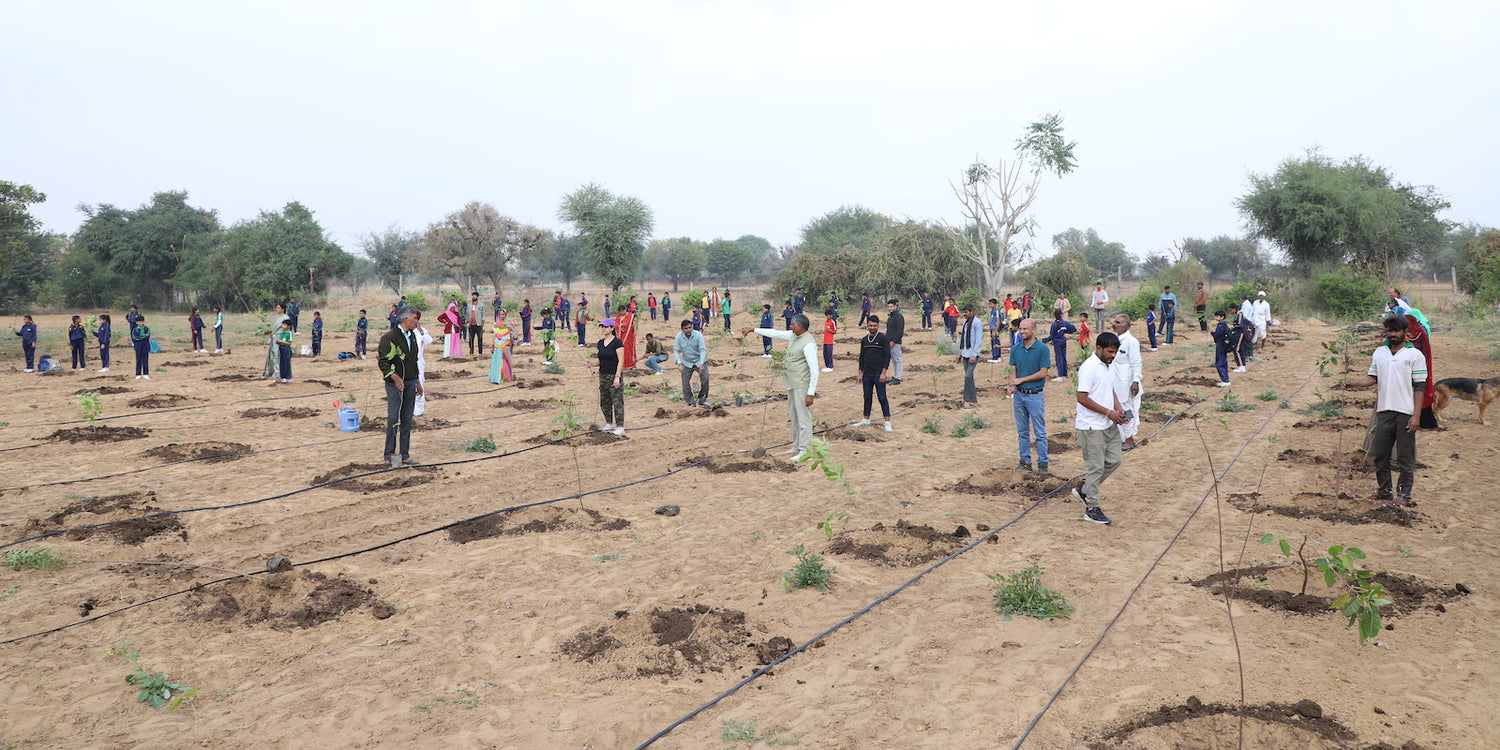Agroforestry in Uttar Pradesh: Enhancing Rural Livelihoods and Green C
Uttar Pradesh, the most populous state in India, is not only an agricultural hub but also a land of immense ecological diversity. With its fertile soi Read more
Connect with us
-
👥 Corporates
If you are looking for:
- 🌲 Tree Plantation Events
- 📊 CSR Projects
📧 corporate@growbilliontrees.com
📞 +91 9699723523
💬 +91 9325931304 WhatsApp (Only)
🕒 Mon - Sat | 10am - 7pm IST
-
🧩 Tree Plantation NGOs
If you are looking for:
- 💰 Financial Assistance
- 🤝 Operational Support
📧 support@growbilliontrees.com
📞 +91 9699723523
💬 +91 9325931304 WhatsApp (Only)
🕒 Mon - Sat | 10am - 7pm IST
-
🌼 Individuals
If you are looking for:
- 👥 Group Tree Plantation Drive
- 🌳 Bulk Tree Plantation
📞 +91 9699723523
💬 +91 9325931304 WhatsApp (Only)
🕒 Mon - Sat | 10am - 7pm IST
Trending
Trees for Corporates
Agroforestry in Uttar Pradesh: Enhancing Rural Livelihoods and Green Cover
Uttar Pradesh, the most populous state in India, is not only an agricultural hub but also a land of immense ecological diversity.
With its fertile soil, numerous rivers, and rich biodiversity, the state holds tremendous potential for agroforestry—an integrated land-use system combining agriculture and forestry.
Agroforestry in Uttar Pradesh has become a beacon of hope for sustainable development, improving rural livelihoods, combating climate change, and enhancing green cover.
Historical Perspective of Agroforestry in Uttar Pradesh
Agroforestry is not a new concept in Uttar Pradesh. Historical texts reveal that farmers in the region have practiced mixed farming systems for centuries.
Trees like neem (Azadirachta indica), mango (Mangifera indica), and teak (Tectona grandis) were traditionally planted alongside crops to provide shade, fodder, timber, and medicinal benefits.
Over time, the need to balance agricultural productivity and ecological sustainability has brought agroforestry to the forefront of rural development strategies.
Importance of Agroforestry in Uttar Pradesh
1. Improving Rural Livelihoods
Uttar Pradesh has a predominantly agrarian economy, with nearly 77% of its population engaged in agriculture. Agroforestry offers an additional source of income by diversifying farming outputs.
Farmers grow high-value timber species like poplar (Populus deltoides) and eucalyptus (Eucalyptus tereticornis) alongside staple crops, creating dual income streams from agriculture and forestry.
2. Enhancing Green Cover
Uttar Pradesh is committed to increasing its forest and tree cover to combat deforestation and urbanization. Agroforestry plays a vital role in achieving this goal, contributing to India's Green India Mission by improving tree density in farmlands.
3. Mitigating Climate Change
Trees in agroforestry systems act as carbon sinks, reducing greenhouse gas emissions. A hectare of agroforestry can sequester approximately 25–50 tons of carbon dioxide annually, making it an effective tool in combating climate change.
4. Water and Soil Conservation
Agroforestry improves soil fertility by increasing organic matter, reducing erosion, and enhancing water retention. Tree roots stabilize the soil, while leaf litter enriches it with nutrients.
Scientific Data Supporting Agroforestry
- Yield Improvement: Research by the Indian Council of Agricultural Research (ICAR) shows that agroforestry systems can increase crop yields by 10–20%, thanks to improved soil health and microclimatic conditions.
- Economic Gains: Studies in Uttar Pradesh reveal that farmers practicing agroforestry earn 30–40% more compared to those relying solely on monoculture farming.
- Environmental Benefits: Agroforestry in Uttar Pradesh has contributed to sequestering 2.5 million tons of carbon dioxide annually, aligning with India's climate action targets.
Popular Agroforestry Practices in Uttar Pradesh
1. Taungya System
A widely adopted method where farmers grow crops between rows of trees. Species like teak and poplar are commonly used, as they provide timber without compromising crop productivity.
2. Boundary Plantations
Farmers plant trees like eucalyptus and neem along the edges of their fields. These trees serve as windbreaks, reduce soil erosion, and provide timber and fodder.
3. Agri-Silviculture
This system combines crops and trees on the same plot. In Uttar Pradesh, sugarcane intercropped with poplar is a common example, offering high economic returns.
4. Agri-Horti-Silviculture
A mixed approach where fruit trees, timber trees, and crops coexist. Mango and guava are popular fruit species integrated with forestry in this system.
Environmental Impact of Agroforestry
1. Biodiversity Conservation
Agroforestry systems serve as habitats for birds, insects, and small mammals, enhancing biodiversity. Birds like the Indian roller and mynah thrive in such environments, aiding in pest control.
2. Reducing Heat Islands
Uttar Pradesh faces rising temperatures, particularly in urban and peri-urban areas. Agroforestry helps lower local temperatures through increased vegetation cover, creating cooler microclimates.
3. Combating Desertification
In regions like Bundelkhand, agroforestry mitigates desertification by preventing soil erosion and improving moisture levels.
Fun Facts About Agroforestry in Uttar Pradesh
- Poplar Popularity: Uttar Pradesh is India's largest producer of poplar-based plywood, thanks to agroforestry.
- Sugarcane and Trees: Combining sugarcane with poplar increases farm income by up to 50%, making it a favorite agroforestry system among farmers.
- Ancient Wisdom: Historical texts like the Vedas and Ramayana mention agroforestry-like practices, showcasing its deep cultural roots.
Challenges in Agroforestry Adoption
-
Lack of Awareness Many farmers are unaware of agroforestry’s long-term benefits, limiting its widespread adoption.
-
Policy Gaps While policies like the National Agroforestry Policy (2014) exist, state-specific implementation frameworks are often lacking.
-
Market Access Farmers face challenges in selling timber and agroforestry products due to limited market linkages and fluctuating prices.
-
Land Tenure Issues Small and marginal farmers, who form a majority in Uttar Pradesh, often hesitate to adopt agroforestry due to land ownership concerns.
Grow Billion Trees: Promoting Agroforestry in Uttar Pradesh
Grow Billion Trees is actively involved in promoting agroforestry practices across Uttar Pradesh, focusing on sustainability, livelihood enhancement, and environmental conservation.
Collaborations
- Partnering with state agricultural universities and research institutions to develop region-specific agroforestry models.
- Working with local NGOs and farmer cooperatives to implement training programs on agroforestry practices.
Execution Strategies
- Tree Nurseries: Establishing nurseries to provide high-quality saplings of timber, fruit, and fodder trees to farmers at subsidized rates.
- Farmer Training Programs: Organizing workshops and field demonstrations to educate farmers about the economic and ecological benefits of agroforestry.
- Market Linkages: Facilitating connections between farmers and timber-based industries to ensure fair prices for agroforestry products.
Awareness and Advocacy
- Running social media campaigns and community outreach programs to highlight the role of agroforestry in combating climate change.
- Promoting success stories of farmers who have benefited from agroforestry to inspire others.
Key Achievements by Grow Billion Trees
- Tree Plantation Drives: Over 10 million trees planted across Uttar Pradesh as part of agroforestry initiatives, significantly increasing green cover.
- Economic Upliftment: Partnered with over 50,000 farmers, enabling them to earn additional income through agroforestry.
- Policy Advocacy: Worked with the Uttar Pradesh government to streamline timber regulations, making it easier for farmers to sell their produce.
Future Prospects
By 2030, agroforestry in Uttar Pradesh has the potential to:
- Increase the state’s tree cover by 20%.
- Enhance rural incomes by 50% through diversified farming systems.
- Offset 10 million tons of carbon dioxide annually, contributing to India’s climate goals.
Conclusion
Agroforestry in Uttar Pradesh is more than just a farming technique; it is a transformative approach that integrates economic growth with environmental sustainability.
By improving livelihoods, enhancing green cover, and combating climate change, agroforestry is paving the way for a greener and more prosperous Uttar Pradesh.
Grow Billion Trees is at the forefront of this revolution, empowering farmers, restoring ecosystems, and ensuring a sustainable future for generations to come.
Through collective efforts, agroforestry can truly become a cornerstone of Uttar Pradesh’s sustainable development.
Poplar Agroforestry in Uttar Pradesh
Known as the superstar of timber trees, poplar is a farmer’s favorite in Uttar Pradesh, offering quick returns, shade, and the foundation of India’s plywood industry.
Agri-Silviculture in Uttar Pradesh
A classic combo where crops and trees share the spotlight, boosting farm yields while adding timber and ecological balance to the mix.
Sugarcane and Agroforestry
Uttar Pradesh farmers hit the jackpot by pairing sugarcane with fast-growing poplar, doubling their income and sweetening their farming success.
Neem in Agroforestry
The ultimate multitasker, neem provides medicinal value, pest control, and shade, making it an essential ally for Uttar Pradesh’s agroforestry enthusiasts.
Taungya Farming in Uttar Pradesh
A time-tested method where crops flourish between rows of timber trees, proving that teamwork makes the dream work on farmlands.
Agroforestry for Green India Mission
Uttar Pradesh contributes significantly to increasing India’s tree cover, one poplar and eucalyptus at a time, making the Green India Mission a reality.
Agroforestry and Carbon Sequestration
These tree-crop systems act as carbon traps, turning Uttar Pradesh’s farmlands into mini climate heroes fighting global warming.
Boundary Plantations in Agroforestry
Farmers plant timber or fruit trees along field edges, creating natural fences that double as income generators and windbreaks.
Agroforestry and Biodiversity in Uttar Pradesh
These systems create habitats for birds, insects, and small mammals, transforming farms into buzzing ecosystems of life.
Mango in Agroforestry
Adding mango trees to farmlands not only pleases the palate but also boosts income, making it a sweet deal for Uttar Pradesh farmers.
Agroforestry for Soil Health
Tree roots stabilize the soil and enrich it with organic matter, making Uttar Pradesh’s farmlands more fertile and erosion-resistant.
Grow Billion Trees in Agroforestry
Championing agroforestry across Uttar Pradesh, Grow Billion Trees empowers farmers, plants millions of trees, and ensures sustainable rural growth.
You may like
Corporate Plantations
FAQ
What is agroforestry in Uttar Pradesh?
Agroforestry blends farming and forestry, boosting rural incomes while increasing green cover. Grow Billion Trees promotes this sustainable practice to enhance livelihoods and fight climate change.
Why is agroforestry important in Uttar Pradesh?
It diversifies farmer incomes, combats soil erosion, and reduces carbon emissions. Grow Billion Trees ensures these benefits reach rural communities while restoring ecosystems.
How does agroforestry help farmers?
Farmers earn dual incomes from crops and timber, improving economic stability. Grow Billion Trees trains farmers to adopt agroforestry practices for long-term benefits.
Which trees are popular in Uttar Pradesh’s agroforestry?
Poplar, eucalyptus, neem, and mango are farmer favorites, offering timber, shade, and income. Grow Billion Trees provides quality saplings to expand these plantations.
What is the Taungya system?
This involves growing crops between rows of trees, maximizing land use. Grow Billion Trees supports farmers in adopting this innovative and productive system.
How does agroforestry combat climate change?
Trees sequester carbon and reduce greenhouse gases, making farms climate-resilient. Grow Billion Trees scales up agroforestry projects to amplify these climate benefits.
Can agroforestry improve soil health?
Yes! Tree roots reduce erosion and enrich soil with organic matter. Grow Billion Trees ensures these systems improve farmland fertility across Uttar Pradesh.
What challenges do farmers face with agroforestry?
Lack of awareness and market access can hinder adoption. Grow Billion Trees bridges these gaps with training, support, and market linkages for farmers.
How does agroforestry support biodiversity?
Agroforestry creates habitats for birds, insects, and mammals, turning farms into biodiversity hotspots. Grow Billion Trees helps design systems that balance farming with wildlife conservation.
What role does poplar play in agroforestry?
Poplar grows fast and fuels India’s plywood industry while coexisting with crops like sugarcane. Grow Billion Trees encourages its use for profitable and sustainable farming.
How does agroforestry contribute to the Green India Mission?
By increasing tree cover on farmlands, agroforestry helps India achieve its green targets. Grow Billion Trees partners with farmers to plant millions of trees in Uttar Pradesh.
Can small farmers adopt agroforestry?
Absolutely! Small farmers benefit from extra income and sustainable farming practices. Grow Billion Trees provides resources and guidance to help them integrate agroforestry.























